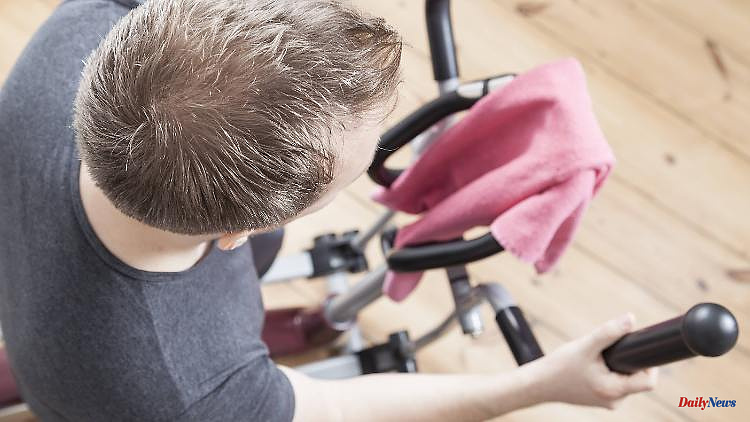Purchasing your own cross trainer sounds like a good investment for anyone who wants to exercise at home in a way that is gentle on their joints. However, many fitness devices are absolutely useless, including expensive models, as the test by Stiftung Warentest shows.
They cost up to 1300 euros and promise a good figure and fitness with regular training: cross trainers and elliptical trainers. If you are considering purchasing one of these devices, you should take a very close look. According to the Stiftung Warentest, most cross trainers have significant shortcomings, such as pollution, poor measuring systems for heart patients or a lack of stability in the stress test.
Eight out of seven devices between 450 and 1300 euros therefore failed. But how recommendable is the supposed "test winner"?
Cross trainers are also often called elliptical trainers or elliptical cross trainers because the feet move in an ellipse when viewed from the side. Although the terms are often used interchangeably, there are differences between device types. The motion sequences of traditional cross trainers should resemble jogging or fast running, while elliptical trainers simulate walking or brisk walking. For this reason, cross trainers put a little more strain on the leg muscles. The movement sequences on elliptical trainers, on the other hand, protect the joints of the user. In addition, the flywheel mass is at the back of the cross trainer, while it is at the front of the elliptical trainer. Both have the benefit of engaging the arms and shoulders in the workout, engaging the whole body and not just isolated muscle groups.
Even the most expensive device in the Finnlo test for 1300 euros could not get a better grade than "poor" (4.6) in this test. But why did so many devices perform poorly? On the one hand, it was due to the lack of stability in almost all cross and elliptical trainers. During the stress test, the fixed handles bent enormously or even broke off. Only the devices from Christopeit and Finnlos received a "sufficient". Another problem with many devices was the insufficient distance between the joint of the handrail and the base. Here it can be the models from Skandika and U.N.O. You can even injure your foot if you want to change the setting on the display and stand on the transport wheels. Another - actually useful - function of many devices is the measurement of the heart rate. According to safety regulations, an elliptical cross trainer in heart rate mode must be able to slowly reduce the load if the pulse is no longer detected by the sensor. Shockingly, the Horizon and Skandika devices don't respond to missing signals at all.
For good training, the set load must also be right. However, this is not the case with almost all devices. The wattage on the Reebok, Kettler and Horizon is higher than expected, requiring more pedaling power than set. This can quickly lead to excessive stress. The opposite, too low wattage, is also a problem with some devices. They show more watts than you actually set. This can lead to the training goal not being achieved. Only Finnlo delivered a good ad.
Another problem with five devices is the pollutant load, which was above the permitted limit values of the EU or the GS mark. The testers found carcinogenic polycyclic aromatic hydrocarbons (PAH) in the Horizon and Skandika. In the cover flaps of the handrails, Horizon, Kettler, Skandika and U.N.O. contain critical plasticizers.
Stiftung Warentest comes to a devastating verdict: None of the tested devices is really recommendable. Compared to the other elliptical and cross trainers, however, the Christopeit Eco 2000 for 600 euros still came out on top (grade 4.0). It passed narrowly in the points of safety and pollutants. Here, however, you have to set a higher wattage than actually planned. The cross trainer should also not be loaded with the maximum permitted weight of 150 kilos, otherwise the mobile handrails of the device will bend too much. Furthermore, the device contains naphthalene, which is just below the permitted limit of the GS mark, but is still harmful to health. However, it can still evaporate over time because it is a volatile substance. So the Christopeit Eco is not really a good alternative to the failures in the test.












